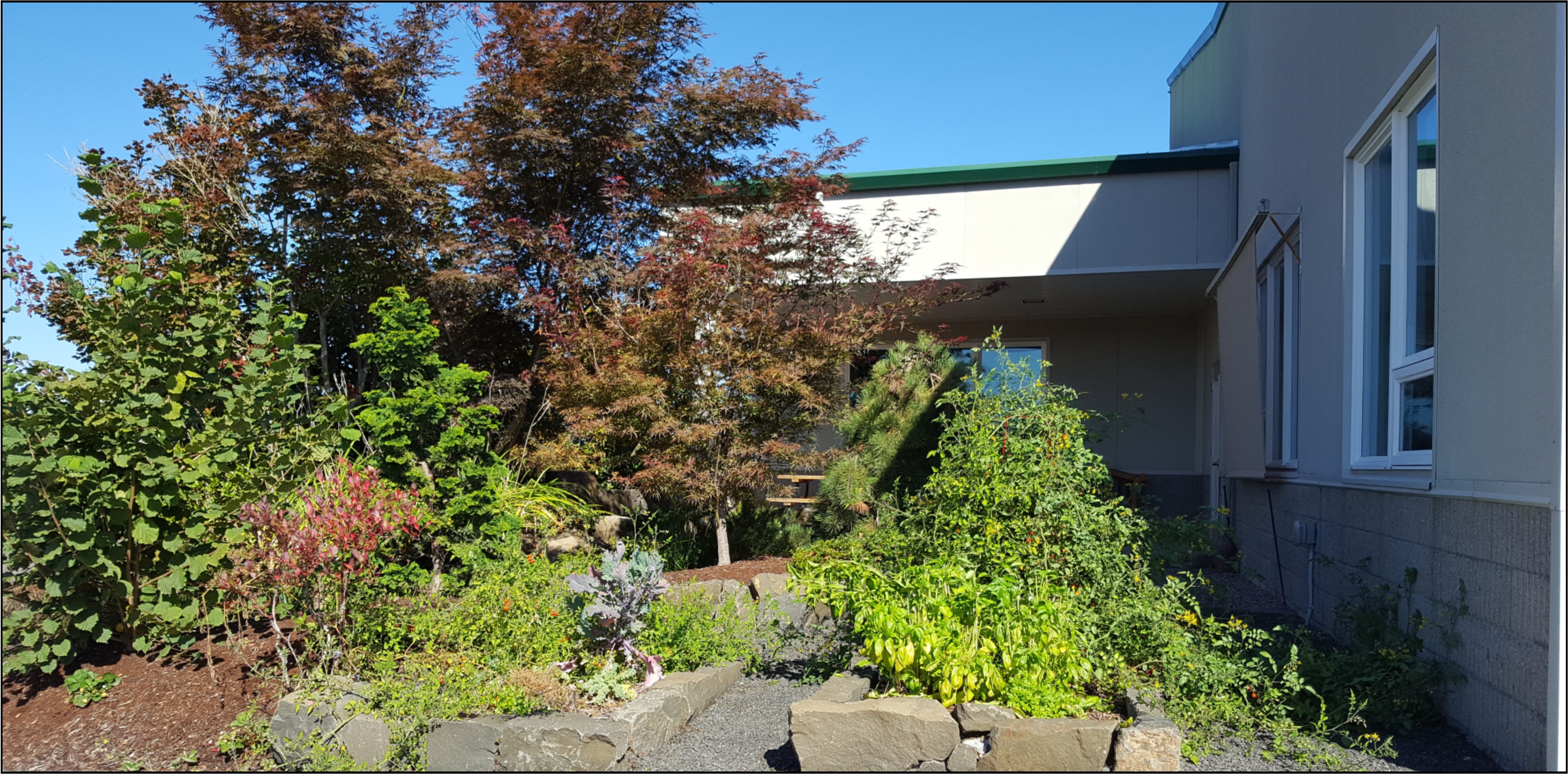Essex General Construction has remodeled their home building with a rain garden and native habitat project. They have created a naturalistic landscape composed of a series of cascading rain gardens that manages 800 sqft of roof surface runoff. The project not only collects and filters water but also adds a beautiful foreground for a outdoor break area with wetlands and Amazon Creek in the backdrop. The resulting landscape has provided year-round beauty; food, shelter and water for wildlife; and a relaxing, shaded place for employees to meet or enjoy their lunch.
Restoration Techniques
Stormwater Management: Roof water from the storm drain runs through soils and native plants to clean, cool, infiltrate and delay the stormwater.
Native Plantings: Integration throughout the rain gardens and the landscape provide pollinator and bird habitat, in addition to reducing fertilizer, pesticide and irrigation needs.
Pollinator Habitat: A recirculating water feature provides a shallow water source that allows butterflies and other pollinators to access water year round. Rocks provide a space for insects to warm themselves on cooler sunny days.
Water conservation: Efficient irrigation system, healthy, absorbent soils and native plants all minimize water use.
The completed rain garden offers both environmental and economic benefits including:
- Improved instream water quality – benefits fish, amphibians, and macro-invertebrates
- Reduction of urban pollutants – especially heavy metals and petrochemicals from entering Amazon Creek
- Reduction of erosion – by delaying the stormwater on site, the stormpulse pressure on Amazon Creek is reduced
- Wildlife habitat integration – native plants in urban landscapes benefit local song birds, pollinators, and wildlife
- Distinctive signage – highlights the sight as an example of Trout Friendly Landscaping, and reminds passersby, visitors, and employees that the water that falls on all urban sites is connected to trout habitat.

